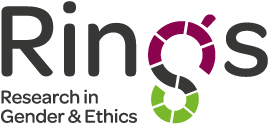Are women of Indian Sundarbans living in the dark? A gender analysis of eye health in the Indian Sundarbans for responsive health systems
This poster summarizes the findings from a study on eye health in the Indian Sundarbans which analysed the role of gender and intersectionality in health.
The scale of the issue
Worldwide 6701 million people are visually impaired, 90% visually impaired people live in low to middle-income countries. India alone contributes 22% of the world’s visually impaired, while it is home to 12.9% of world’s aged population. 64% of blind people are women. Globally, the ratio of female to male visual impairment prevalence
ranges from 1.5 to 2.22. This disparity is due to women’s: longer life expectancy, limited access to resources, time, lack of mobility, and low perceived value of their own illness.
We explored how gender cross cuts with other social stratifiers to influence the prevalence and health seeking behaviour among those 50 years and above. It was a mixed method study. Eye screening conducted by optometrists; and three levels of visual impairments were examined (normal vision, low vision and blindness). 34 people from 12 villages were interviewed; 24 in-depth interviews were conducted in total.
What we found
We found that when gender cross cuts with age, elderly women are more likely to develop visual impairments. Poor men are less likely to develop visual impairments than non-poor women. Gender specific education appears to only be effective for elderly males. Low perceived severity and importance exists among elderly women regarding eye care.
When gender cross cuts with other social stratifiers like age, poverty and education women are in a more vulnerable position compared to men, both in terms of age and poverty status. Given the multi-layered nature of vulnerability a resilient health system needs to take an intersectional approach to ensure effective and gender equitable health care.
By Debjani Barman, Baishali Sarkar, and Arnab Mandal
You can read more about this project and access resources on the project page.
